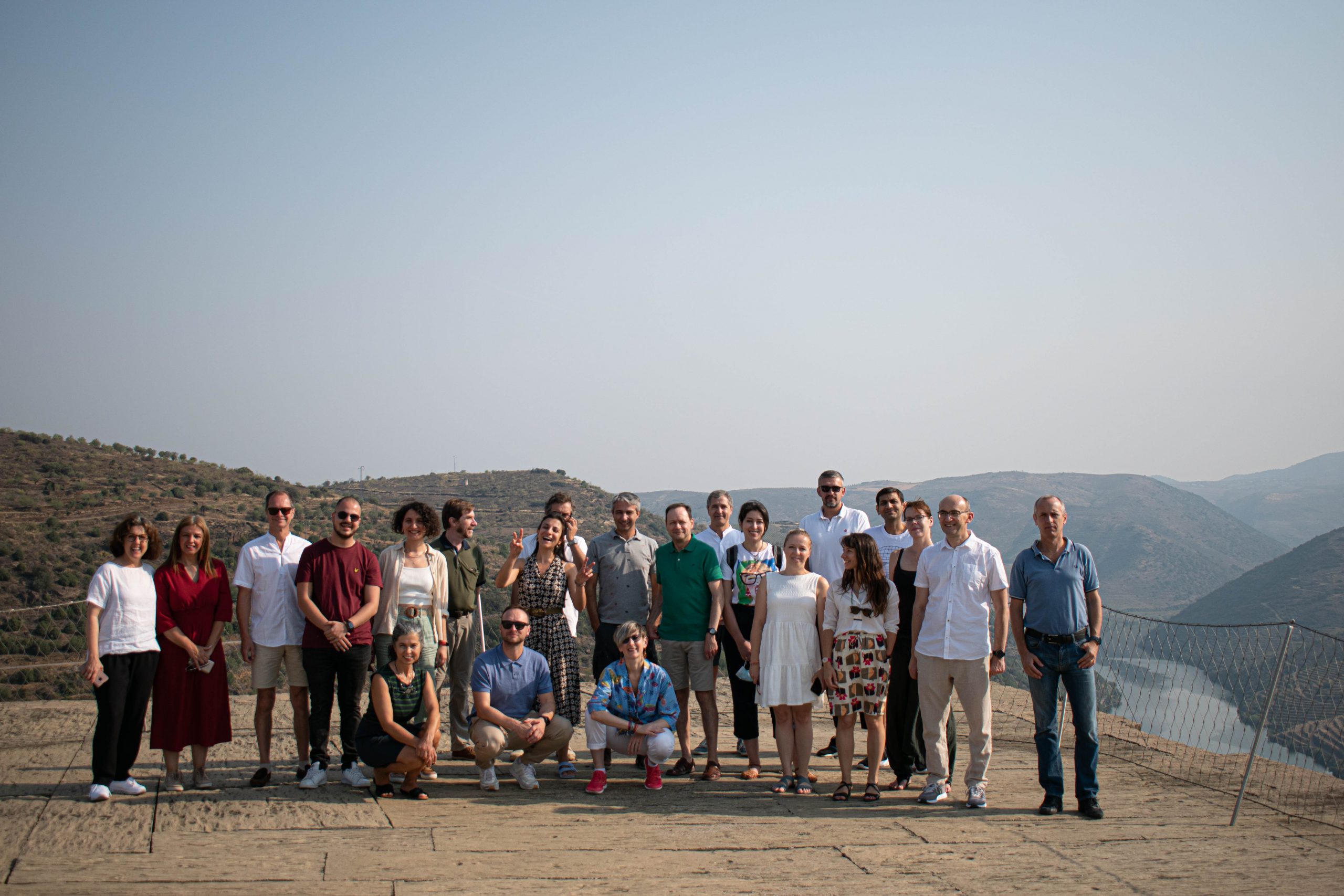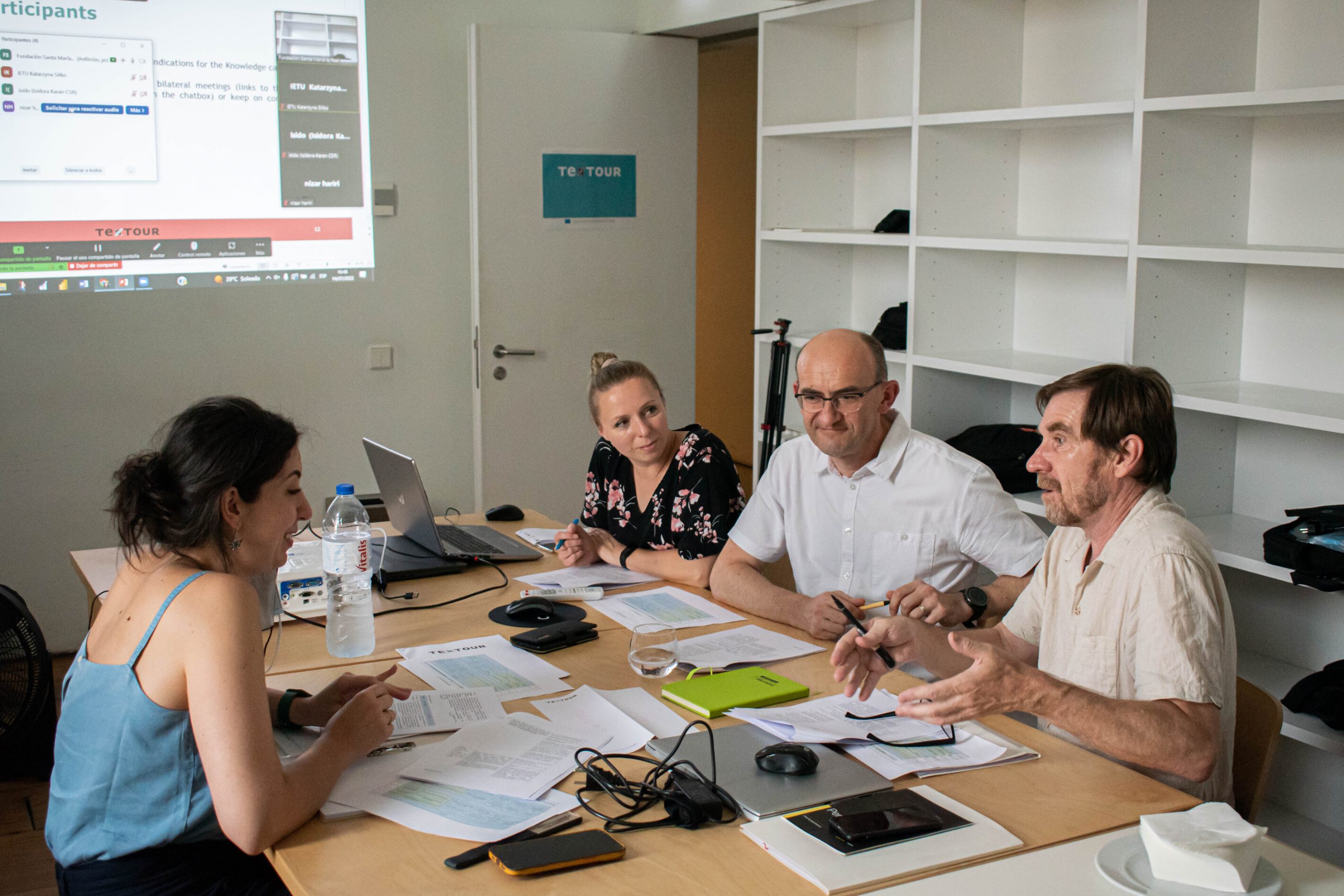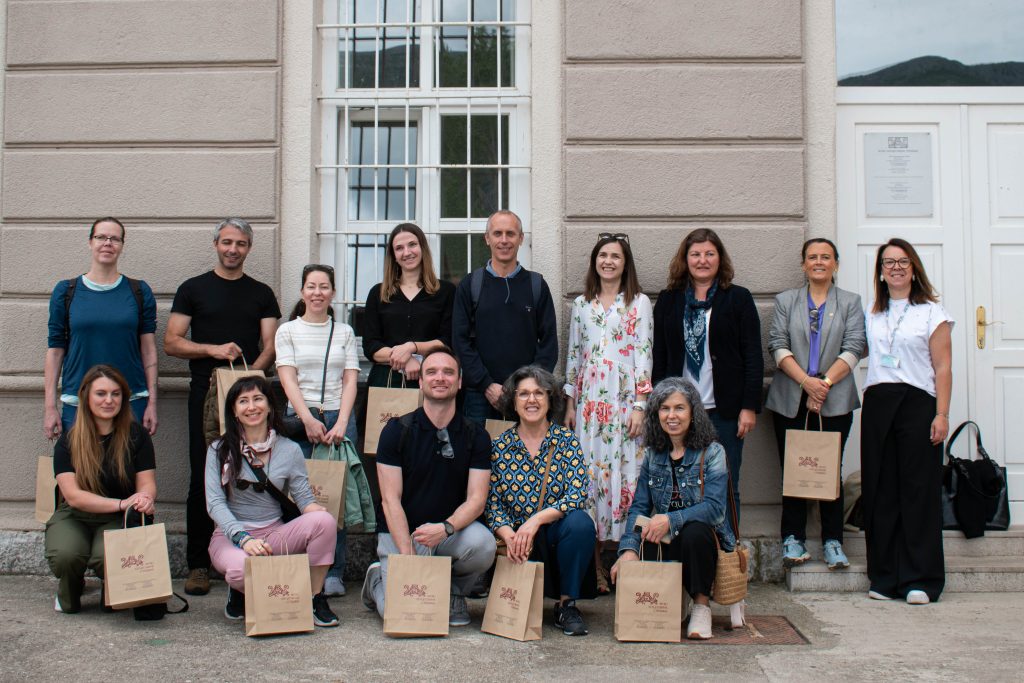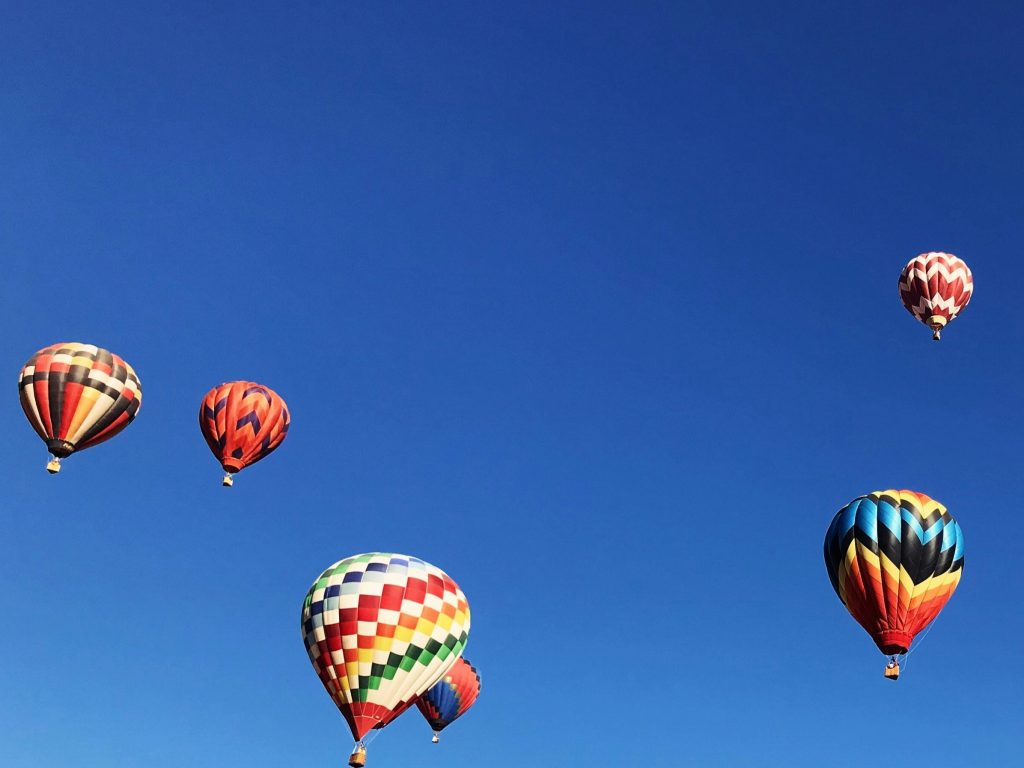Published on 05 Aug 2022
Defying the flight service disruptions, lost luggages, heatwave and last-minute setbacks TExTOUR’s partners met in Foz Côa, in Portugal, on the 14th-15th of July for the pilot forum workshop. An intense two-day meeting that put an ende to piltos workshop phase marking the beginning of the sustainable tourism development strategies implementation phase.
TExTOUR’s pilot meeting took place in the astonishing frame of the Côa Valley, a wild nature area that holds the memories of humankind’s ancestors from 30 000 years ago. What best place than this to discuss about the future development of tourism that has sustainability and culture as the focal point of its design?
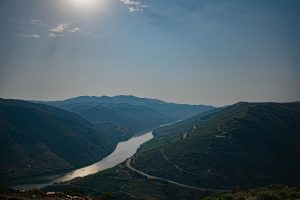
The Côa Museum, which hosted the meeting, is a perfect example of harmony between past and present. A modern way to introduce people to the history and legacy of humankind.
In TExTOUR, each partner has its own heritage made of culture, nature, traditions that must be preserved and transported into the present with a sustainable plan that looks to the future.

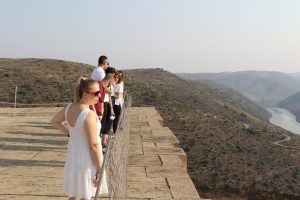
TExTOUR’s pilots where the true protagonists of Côa meeting, with the first day completely dedicated to them. They have completed a series of four workshops to co-create a sustainable tourism development model with their local communities.
All pilots worked hard to involve their communities in the process of designing a path for a future development of their territories that could guarantee economic development without endangering the heritage. A special attention was dedicated to minorities and groups that are not usually involved in tourism development strategies to be sure to include as many points of view and to hear as many voices as possible.
The knowledge café is open! Please, have a sit.
The 4th Pilot Workshop took the form of a knowledge café. A semi- structured talking space adapted from David Gurteen‘s one.
People gathers around a small table, like you do in a café, to talk about specific topics and share their experience, knowledge, and opinion. In TExTOUR, each table was occupied by a couple of pilots sharing the results of their business canva models and telling each other the sustainable tourism actions that they are going to implement with and within their local community. There were no facilitators at the table, but each participant had a booklet with a guide and a list of conversation starters.
TExTOUR’s knowledge café mixed an unstructured conversational process with a rotating format of tables. The aim was to make sure that each participant could speak to as many different people as possible.
While partners paired up to discuss their sustainable tourism actions, one pilot at time had an individual meeting with Fundación Santa María la Real, the researchers from University of Bologna and CARTIF to identify strengths and weakness of each action and find together the best way to manage the actions the best possible way.
This workshop was intense but extremely fruitful. The sharing of ideas and knowledge greatly helped reaching the pilot’s actions final shape, identifying risks and opportunity and understanding how to mitigate the first and exploit the latter.
Map, measure, assess. Final round!
On the second and last day of the Pilot Forum, the mapping and monitoring strategies were explained and discussed together.
The pilots had the opportunity to review the workshop experience with the researchers of the University of Bologna, giving their feedback. The workshop experience was overall positive for all the pilots and the efforts made to involve local communities and social groups that are usually less involved in tourism projects were worth it.
TExTOUR is an innovative project and it means that it is looking for new paths to travel to foster sustainable cultural tourism development. The workshop methodology was created for this project and tested by the pilots. Their positive and negative feedback was essential to identify the strengths of this methodology and the weakness that need to be edited to make it as effective as possible for future implementations.
After this final round of discussion and after a quick lunch the meeting was over and it was time for all the participants to go back to their countries to share their experiences with their local communities.
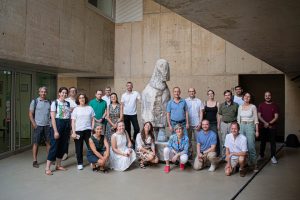
After two days of intense discussion, it is time to go to work to transform ideas, dreams, and words into a concrete reality for current and future generations.
Stay tuned and follow TExTOUR’s journey towards a sustainable tourism development in Europe and beyond.
